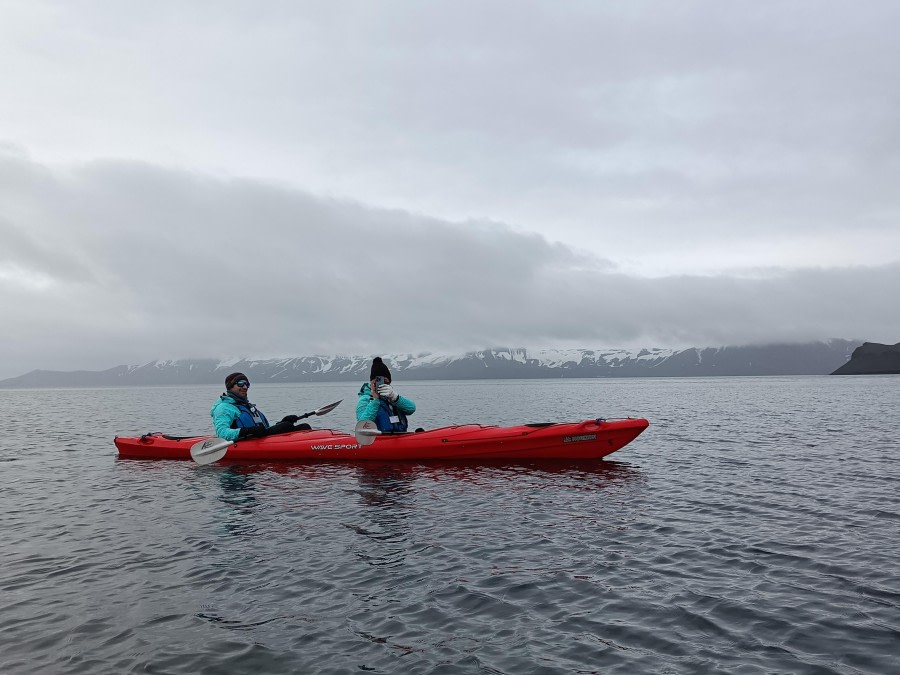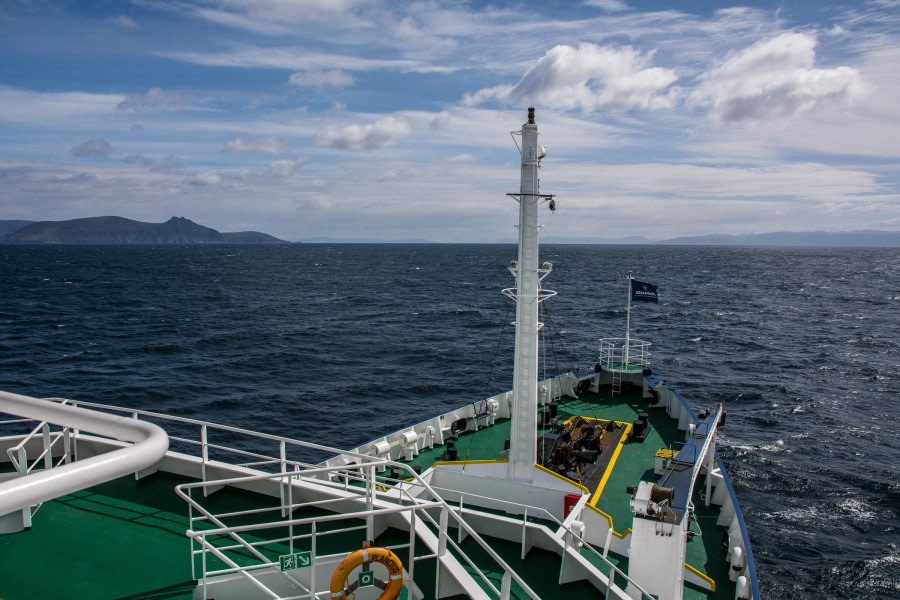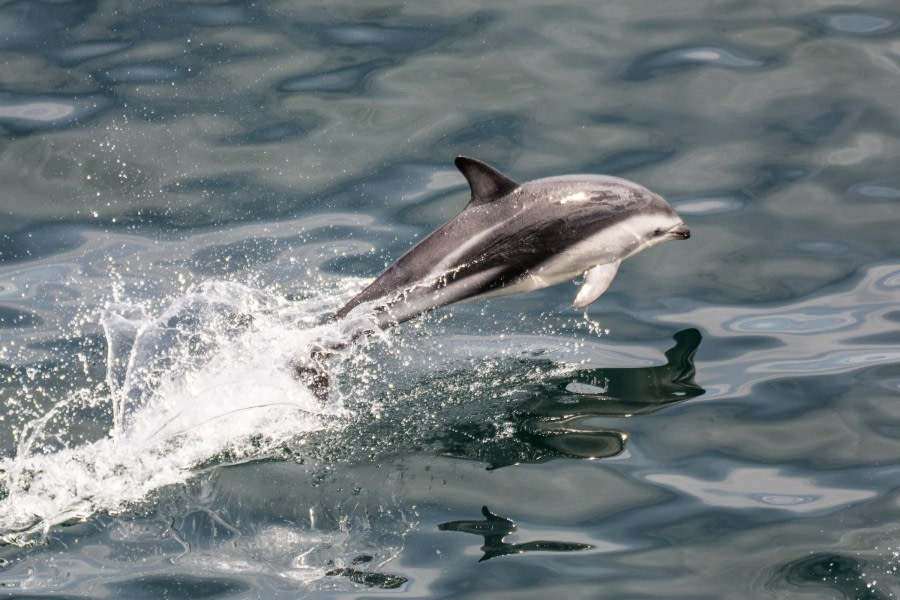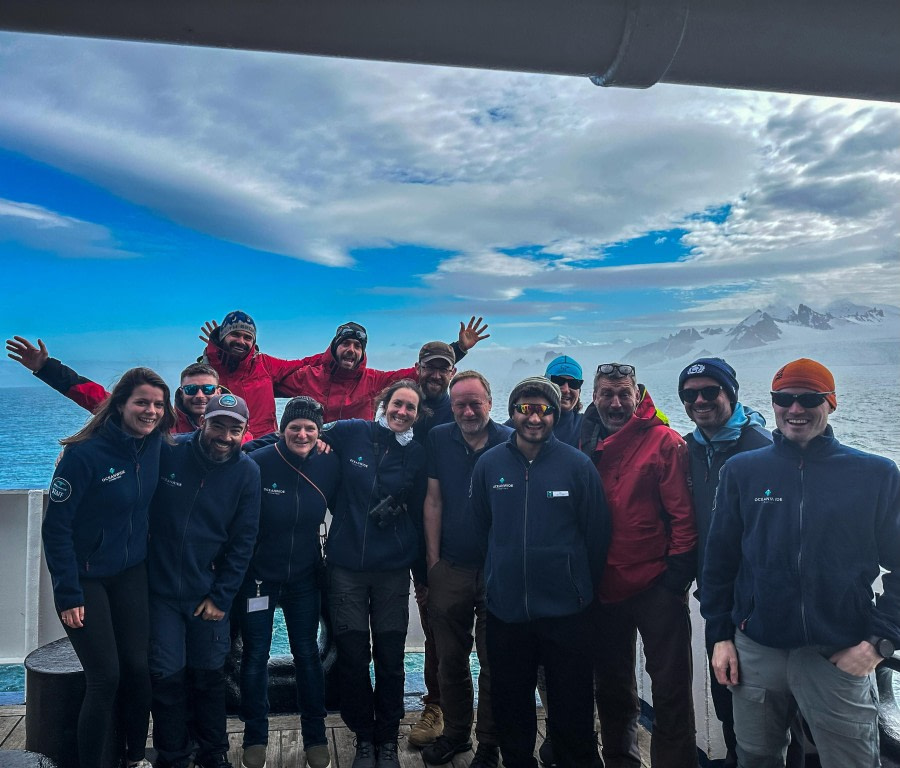| Fecha: |
07.02.2024 |
| Posición: |
64°49.2’S / 63°30.5’W |
| Viento: |
SW-3 |
| Clima: |
Overcast |
| Temperatura del Aire: |
+1 |
In the early hours of the morning, we were invited to drag ourselves out of bed and head for the outside decks or the observation lounge to enjoy a magical moment.
Plancius was about to embark on one of the legendary passages of the Antarctic Peninsula, the Lemaire Channel. It was indescribable to sail through this narrow passageway overlooked by majestic rock ramparts. This passage, sometimes blocked by too many icebergs, was now free. The steep mountains, all black and white, were reflected in a sea as smooth as a mirror.
After breakfast, our expedition team takes us on a tour of Petermann Island, a mecca for polar exploration. One kilometre long, this island is one of the places explored by Jean Baptiste Charcot during his second Antarctic expedition aboard the three-masted schooner "Pourquoi-Pas".
Before disembarking, the Zodiacs took us close to a tide mark whew the two letters "PP" engraved in the rock are visible at low tide. We were then welcomed ashore by Eduardo and his team. From the very first metres, wildlife was everywhere. The Argentinian shelter hut nearby was surrounded by penguins who had established their colony there, while an elephant seal slept peacefully on the foreshore between the rocks.
Several routes had been opened by our expedition team, and we could take them at our leisure to reach a colony of Adélie and Gentoo penguins, or a breathtaking viewpoint on a high point. Here and there, in the middle of the white expanses, penguins return from the sea with their stomachs full of food for their offspring. The chicks, already quite large and gradually shedding their thick down, look like scruffy teenagers.
We could observe them stretching, sleeping soundly or even pestering their parent for yet another meal. What a sight!
In the afternoon, our expedition team suggested us a zodiac cruise in Salpétriere Bay and Port Charcot located on the western side of Booth Island. This area is well renowned for the number and size of its icebergs. In fact, all around us stranded monsters of ice, each bigger than the next, competing in originality, shape and colour.
Smaller drifting ice floes would go almost unnoticed if they weren't used as platforms for a few sleeping seals. We could then observe Crabeater and Leopard seals that were not roused from their torpor by the noise of the zodiac engines. A
fter all these observations in this maze of ice, and as we made our way towards Plancius, a humpback whale came to the surface to breathe. On several occasions, we could see it swimming and then diving slowly, showing us its fluke. What a delight!
After the usual daily recap, in which Hélène told us more about Sea leopard and Marco shared his knowledge of icebergs, dinner was served. For some, the adventure didn't end there. A group of brave volunteers set off to camp under the stars.
Equipped with their camping kit (mattress, sleeping bag and duvet), they boarded the Zodiacs and left Plancius for a night in the snow, in splendid scenery and perfect weather conditions.
Camping
Location: Damoy Point, Dorian Bay
After the incredible afternoon, M/V Plancius was repositioned sailing North across the Lemaire channel and into the Neumayer to reach our overnight spot that had been chosen to spend the night. The beautiful and protected area adjacent to Dorian Bay, tucket in between Jabet Peak and Tombstone Hill.
The weather conditions were excellent, wind was absent, and the sky partially clouded, therefore an incredible night awaited us. After dinner we were shuttled ashore by our expedition team, whilst Koen and Marco had set up the camping site for the night.
The snow was crispy when we started digging our snow pits for the night and the cloudless sky anticipated a bright although cold night. After setting up our kit, the guides led us on a relaxing walk alongside the bay to watch the sunset near a small Gentoo rookery and a lonely resting Weddell seal.
The last sunlight rays cast fabulous hues of yellow and pink on Mount Franais and Mount Agamemnon, the highest peaks of Anvers Island, while M/V Plancius sailed through the Neumayer Channel and wished us good night.














